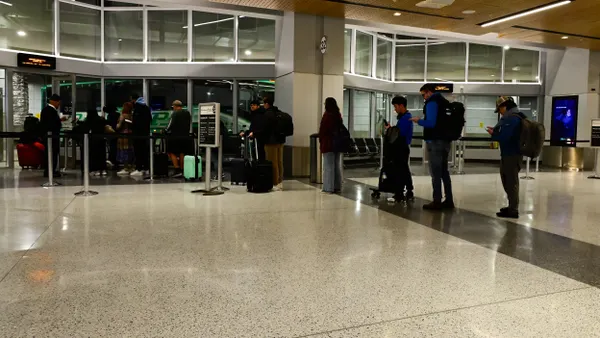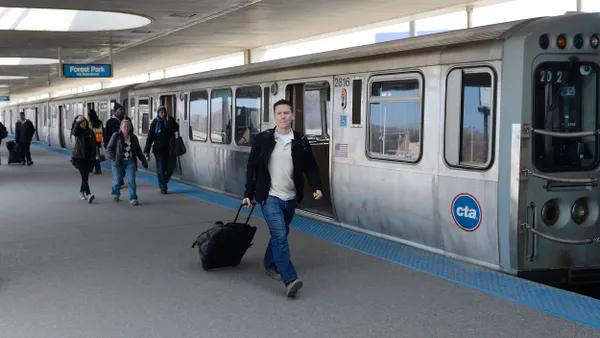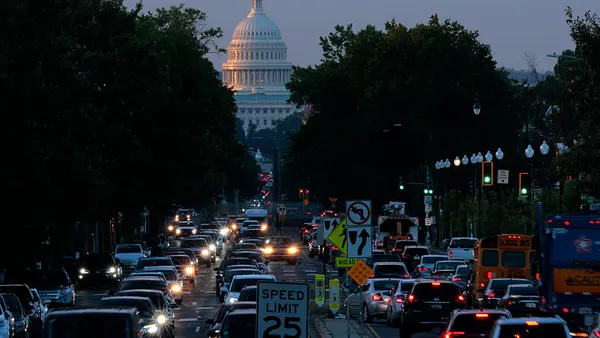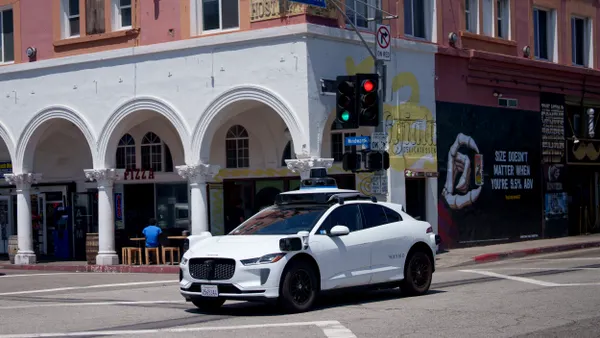Dive Brief:
- Lyft has been granted a patent for a system to allow autonomous vehicles (AVs) to display messages and communicate to pedestrians, bikers and other drivers.
- According to the patent filing, Lyft’s system detects pedestrians or other vehicles and, based on their location, displays a flashing message. For example, the filing shows drawings of a vehicle displaying "Safe to cross" to a pedestrian, or "Yielding" to another car at an intersection. The text is displayed on the car’s windows and windshield.
- Sensors on the vehicle would detect the location, proximity and speed of the recipient to determine the best message. For example, by forecasting the path of a bicycle, the car could display instructions that it is safe to pass, or indicate that it is turning.
Dive Insight:
The proposed system — which may not come to fruition, but has been approved by the U.S. Patent Office — is meant to address a well-established problem with AVs: that "removing a driver from some vehicles can lead to uncertainty and miscommunication," as Lyft wrote in its filing. Cars that can communicate wirelessly with other AVs or connected infrastructure still may not be able to broadcast their intentions to other humans, creating a potential safety nightmare.
It’s a problem automakers are eager to address. Ford has public called for a “shared language” for AVs used across the industry. In a Medium post, Ford human factors technical specialist John Shutko wrote that it was "critical that the communications method we agree upon is as readily understandable as a brake light or turn signal indicator." Ford has experimented with a light bar mounted on a car’s windshield that flashed a series of signals to indicate that a car was yielding, actively driving or accelerating from a stop.
Another approach comes from startup Drive.ai, which has outfitted its fleets of autonomous shuttles with LED screens that display messages like “Waiting” or “Going” to pedestrians. That company is running pilots in Texas.
Lyft’s proposed system ups the ante on the "universal language" approach, crafting messages to communicate directly with nearby vehicles based on the situation. Still, it remains to be seen how the communication system could be integrating into the cars — and how other automakers might follow suit to keep all players on the same page.









